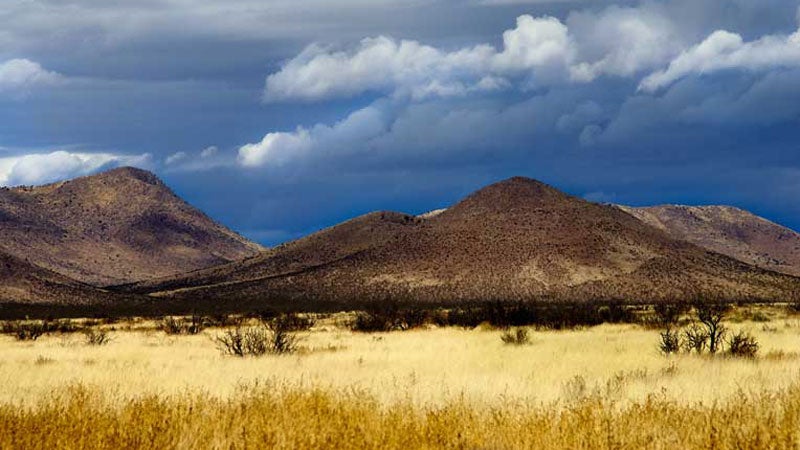Move over, Sleeping Bear Dunes, there’s a new kid on the block. According to the , President Obama plans to use executive authority on Wednesday to designate southern New Mexico’s —a range near Las Cruces, approximately three hours south of Albuquerque—a national monument.
Analysts have expected the action, which protects more than 496,000 acres of land, since March, when Congress designated Michigan’s Sleeping Bear Dunes a wilderness area and Obama used similar authority to preserve 1,665 acres of land along the .
Five ranges—Organ, Dona Ana, Potrillo, Robledo, and Uvas—comprise the Organ Mountains-Desert Peaks area. Owned by the federal Bureau of Land Management, the region features ancient petroglyphs, lava flows, recreational zones, hunting areas, and rare plants and animals, such as pronghorn sheep and the pincushion cactus. The addition is expected to generate as much as $7.4 million per year for New Mexico’s economy by attracting hunters and adventurers from all over the world.
The designation makes good on Obama’s to use executive authority “to protect more of our pristine federal lands for future generations”; specifically, the president used power granted to him by the , signed into law by Teddy Roosevelt in 1906 to allow presidents to restrict federally owned public land. Obama’s decision follows legislation introduced in December by both New Mexico senators, Democrats Martin Heinrich and Tom Udall.
National monuments—as the Organ Mountains are set to become—carry fewer restrictions than wilderness areas, which only Congress can establish. Heinrich and Udall knew their bill, which proposed the latter, stood little chance in today’s divided Congress.
“Once an area has been recognized as a national monument and its profile is raised in this way, I think it makes it easier on the legislative front,” Heinrich said. “But, as you know, nothing is easy in Washington these days.”
Heinrich was referring to skeptics of Obama’s decision who framed the designation as an assault on the rural New Mexico way of life, as well as hindering law enforcement along the Mexican border and restricting hunting and grazing areas.
“It bypasses the will of the people,” said Republican Steve Pearce, a New Mexico congressmen who suggested a far more modest 58,500-acre monument for the Organ Mountains. “It’s not going to be good for the county, and it will depress the economy over the long term and make it harder for the rural New Mexico way of life to continue.”
Pearce’s worries seem somewhat unfounded. For one, Obama’s measure doesn’t go as far as the bill Heinrich and Udall proposed, which sought to protect nearly 3,000 more acres and would have established eight wilderness areas in the region. Heinrich actually expressed some disappointment about the national monument designation because it won’t modify current federal border enforcement policies or hunting restrictions.
In fact, the White House has invited John Cornell, a staffer for the New Mexico Wildlife Federation and president of the Dona Ana County Associated Sportsmen, to Washington for Wednesday’s announcement at the Department of the Interior.
“It’s a huge day for sportsmen in New Mexico,” Cornell said, praising the decision he said will guarantee “that future generations will have these places and good hunting grounds” to pursue quail, antelope, dove, mule deer, and waterfowl.
The Organ Mountains will become New Mexico’s second national monument, following Obama’s establishment of the Rio Grande del Norte National Monument in March 2013. The decision is part of the president’s recent push to promote U.S. tourism ahead of the summer travel season—he’ll swap his cowboy hat for a baseball cap as he heads to Cooperstown’s Baseball Hall of Fame today.


